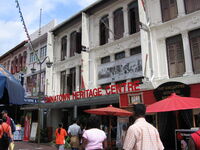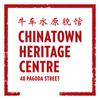The Chinatown Heritage Centre is the gateway for all visitors to trace the footsteps of Singapore's early pioneers and discover the personal stories of people who made Chinatown their home.
Located within three beautifully-restored shophouses on Pagoda Street, the Chinatown Heritage Centre is the only place in Singapore that has recreated the original interiors of its shophouse tenants in the 1950s, offering a rare glimpse into the lives of Chinatown's early residents.

The Chinatown Heritage Centre at Pagoda Street occupies three shophouses in Chinatown, newly restored to preserve memories and untold stories of Singapore's early forefathers.
Visitors will get to step into the humble homes of Chinatown's early residents, rebuilt with the memories of many who had lived, worked and grown up in such cubicles. These small 'eight by eight' living quarters were simply furnished and every object tells a story, providing an insight into their struggles and sacrifices, aspirations and disappointments, love and joy.
The Chinatown Heritage Centre also traces the journey of Singapore's early pioneers who left their villages in China and made their way to Nanyang, the southern seas. They were driven by famine, floods and unrest, and came to Singapore with the hope of earning a living and seeking a better life.
New foreign sights, sounds and smells greeted the Chinese immigrants also known as sinkheh (meaning 'new guest' in Hokkien dialect) when they arrived in Singapore. Disembarking at the piers, they would have seen labourers and traders at work – Armenians, Europeans, Jews, Arabs, Parsis, Bugis, Indians – just to name a few. It would have been their first time seeing someone of another ethnicity. Most of the Chinese immigrants settled south of the Singapore River, giving birth to Chinatown.
See also[]
References[]
- The Chinatown Heritage Centre website:[1].
Acknowledgements[]
This article was written by Roy Tan.
